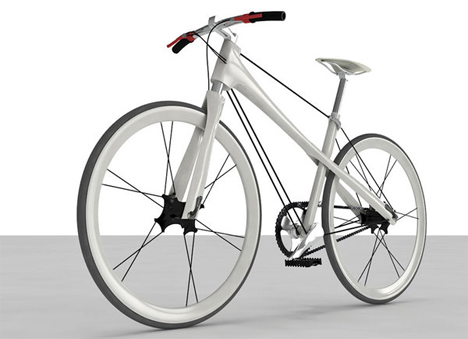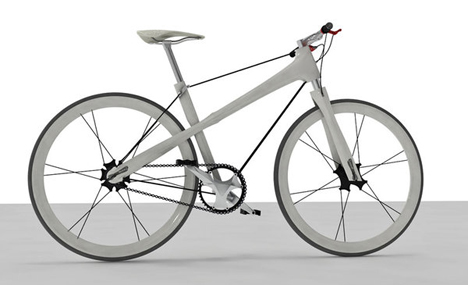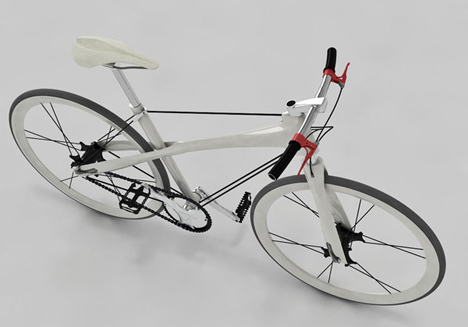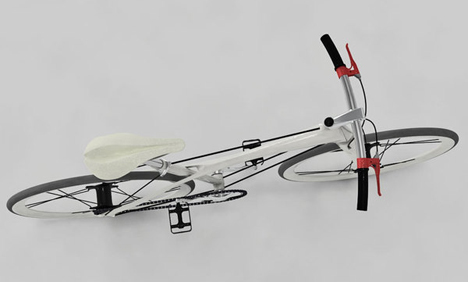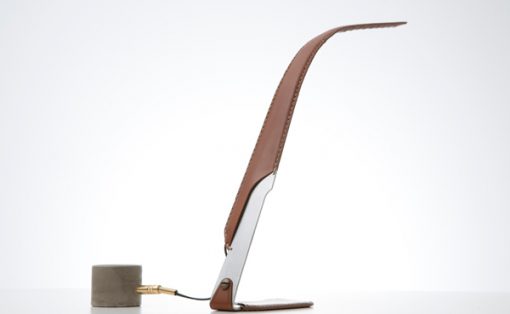Most bikes make use of two back to back triangles in what’s called a diamond frame to give structure and support to all the myriad elements of a bicycle. This Wire Bike from designer Ionut Predescu instead relies on tensegrity to leverage the tensile strength of Kevlar wire against the compression strength of but two carbon fiber tubes. The end result is a theoretically lighter bicycle where the rider and his seat seems to float against the rest of the bike through the tension of the cables.
Designer: Ionut Predescu
